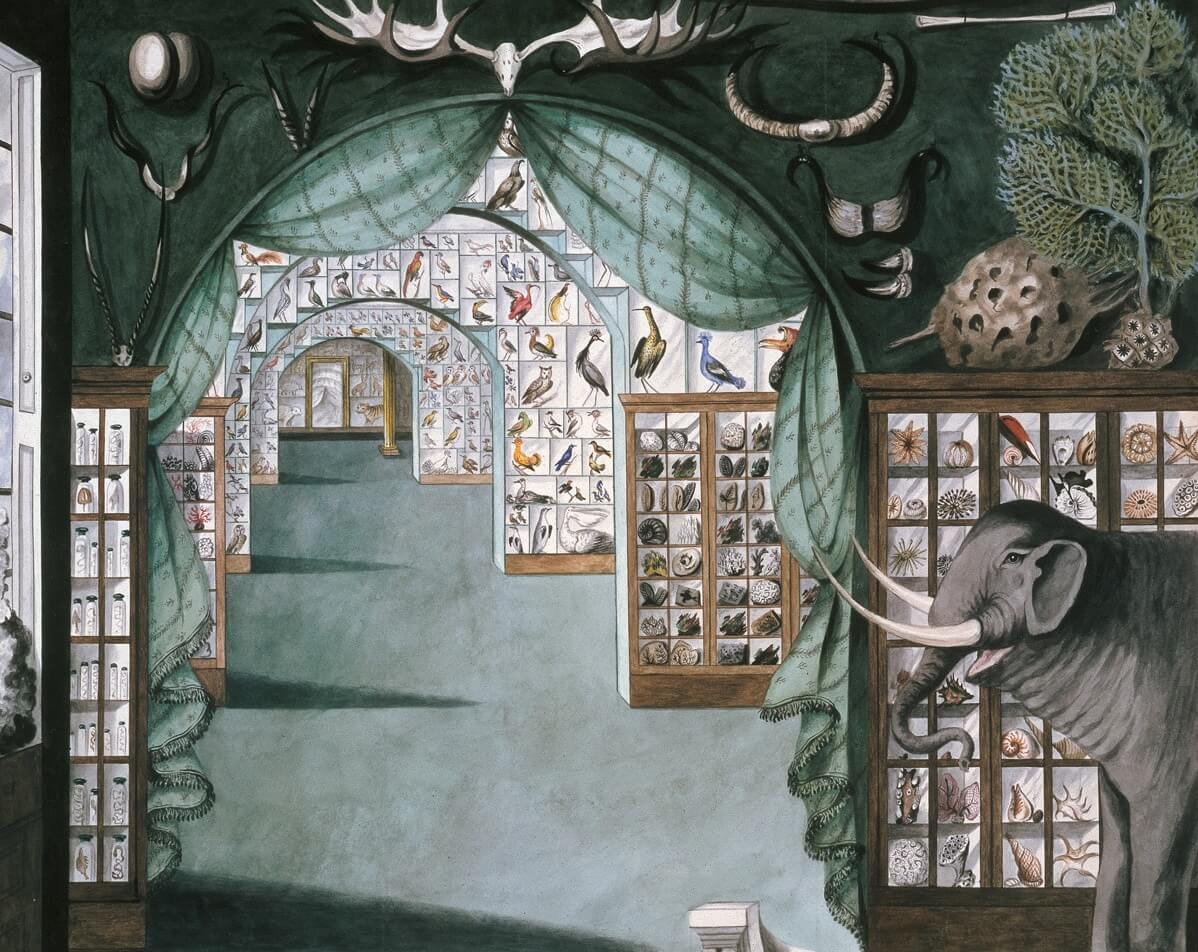
Rediscover Lost Wonder.
Wonder Rooms
ALSO KNOWN AS CABINETS OF CURIOSITIES — ARE A CENTRAL INSPIRATION FOR THE WONDER ROOM EXPERIENCE™.
These were the Renaissance precursor to the modern museum - rooms where people gathered with curated collections of category-defying objects from around the world. At first, the point was not to classify or study them - it was to gasp in wonder, connect with each other and gain new perspectives.

Global trade was the modern world’s “big bang.” It quickly became much easier for us to connect by exchanging stories, cultures and objects.
THE WORLD’S INSATIABLE CURIOSITY ABOUT ITSELF DROVE THE CREATION OF WONDER ROOMS - STUNNING REPOSITORIES MEANT TO REPRESENT THE UNIVERSE IN MICROCOSM.
While they deliberately sought to defy categorization and inspire awe, collectors pursued items in four categories: naturalia - items from the natural world; scientifica - tools and objects used to study and master the natural world; artificialia - fantastic amalgams of completely alien components; and exotica - spiritual artifacts from unfamiliar cultures.
MODERN-DAY SCIENCE WAS PARTLY BORN IN WONDER ROOMS.
The scientific community - including the likes of Leonardo da Vinci - joined together to insist that new discoveries required direct, careful examination of puzzles in the real world - not through reviewing philosophical texts in the original Greek and Latin. They seized on the advent of global trade and the munificence of their benefactors to study a dizzying array of objects from afar. After about a hundred years, science “succeeded” by classifying, typifying and explaining away many of these mysteries, so we often forget that for nearly a century, scientists developed their craft by deliberately immersing themselves - alone and in groups - in these rooms filled with category-defying, ambiguous, intriguing objects.
Wonder Rooms also catalyzed a great deal of modern art. Initially, technical painters and sculptors flocked to these collections for a chance to help create reasonable copies of exotic objects, so that others might see them - even if in two-dimensional form. Soon enough these works of art became objects in the Wonder Room themselves. But eventually artificialia inspired the beginnings of dadaist and surrealist artistic expression, and anatomical diagrams and paintings of taxidermied fauna inspired a turn towards the dark and macabre in the art of the time.
NEW PALETTES WERE DISCOVERED, NEW TECHNIQUES WERE DEVELOPED AND NEW ARTISTIC STANDARDS EMERGED. RENAISSANCE ART WOULD NOT HAVE BEEN WHAT IT WAS OTHERWISE.
The collectors of the day curated Wonder Rooms as a “theater of learning” for their guests - a space and time to connect civilly across divides, learn about the exploding world of global trade, and stimulate conversations about ideas, culture and philosophy. Being able to host such a gathering amidst a wondrous display was a symbol of commitment to the Renaissance ideals of discovery, learning and nonrational encounters with the mysteries of the world.
THE IDEA WAS TO KNOW THAT YOU DIDN’T KNOW - TO OBSERVE CLOSELY FOR A CHANCE TO SEE WHAT HAD NEVER BEEN SEEN - AND TO DO IT IN THE COMPANY OF FRIENDS & ASSOCIATES IN A SPIRIT OF “LEARNED ENTERTAINMENT.”
In a digital world that easily distracts, drains and diminishes, we have revived Renaissance Wonder Rooms…
to give you a (literal!) high-touch experience with objects that inspires as much as it instructs, that connects as much as it creates, that pushes as much as it provides. Reencounter your sense of wonder while getting deep, surprising insights with your guests and discover the possibilities that await your arrival.

